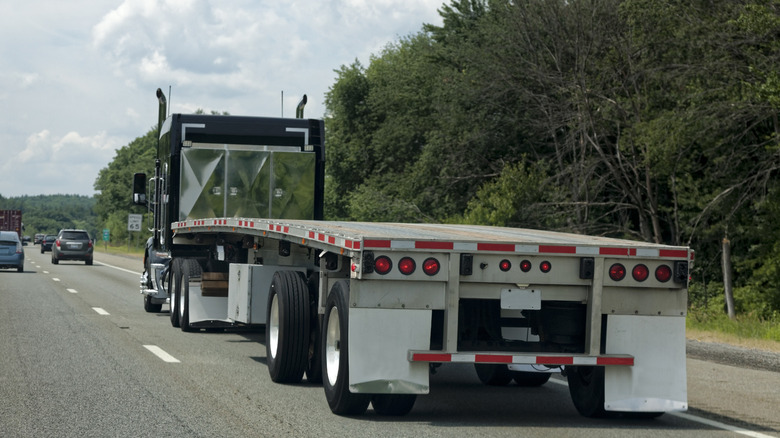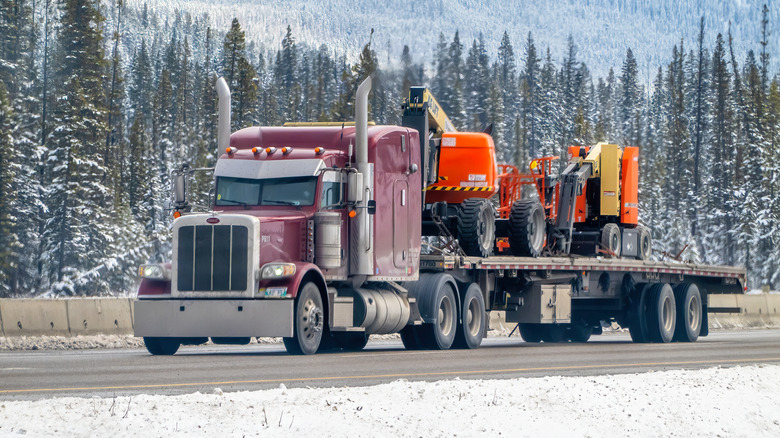Why Are Some Flatbed Semi Trailers Curved?
Flatbeds are just one of many types of semi-trailers that are a common sight on American roads. They're known for their open, single-deck design resembling a bed, from which they derive the name. Given that these trailers do not have covered sides or a roof, the process of loading flatbed trailers is relatively easy, especially with cargo that's large or irregularly shaped. In the U.S., flatbed trailers are typically used to transport heavy or oversized loads that don't require serious protection from the elements. Among the most common commodities transported on flatbed semi-trailers include steel coils, plates, and sheets, pipes, prefabricated concrete parts, lumber, and heavy machinery. While all flatbed trailers may look the same to a layperson, a closer inspection reveals that there are several different types of flatbeds that differ in terms of material, usage, and cost.
Observers with keen eyes might have also noticed a peculiar detail surrounding flatbeds. Many of the flatbed trailers you might see behind one of the world's largest semis or the recently discontinued Kenworth W900 have a distinctive convex curve, with the center of the bed raised higher than the ends. As it turns out, this curve is not due to flaws in the metal used to make the trailers. Instead, these curves are deliberately added as part of the design of the trailer. On flatbed semi-trailers designed to carry heavy loads, the curves straighten naturally when the weight is added. Let's take a further look at why these curves are needed and how they're implemented for various purposes. The next time you see a curved flatbed going down the highway, here's what you can look for.
Curved flatbed semi-trailers explained
Right off the bat, it's important to understand that the curves seen on flatbed trailers have a specific name: camber. And as outlined earlier, this upward arch isn't just for aesthetics — it's a functional design element. On modern flatbed trailers, cambering enhances structural strength and significantly improves load-carrying capacity. While it's a common feature in the trucking industry, camber is a design trait that can also be found on structures made of steel, including bridges and dams where it serves similar weight-bearing and load distribution purposes. On flatbed semi-trailers, you may have also noticed that the degree of curvature on some trailers is more pronounced than on others. This is usually because of the different materials used to construct flatbeds. Flatbed trailers are typically categorized into three types: aluminum flatbeds, steel flatbeds, and combination flatbeds.
Among these, aluminum flatbeds are the lightest, and because aluminum deflects more than steel, these flatbeds usually have the highest angle of camber. On aluminum flatbeds, usually the beam, side rails, and floors are all made from the lightweight metal. Steel flatbeds are known for their durability and long life. They have a metal superstructure and wood floor, and do not deflect as much as aluminum flatbeds. Combination flatbeds are made of both aluminum and steel elements, which maximize strength while keeping weight down. These types of trailers usually exhibit less cambering thanks to the presence of a steel beam for additional support.

